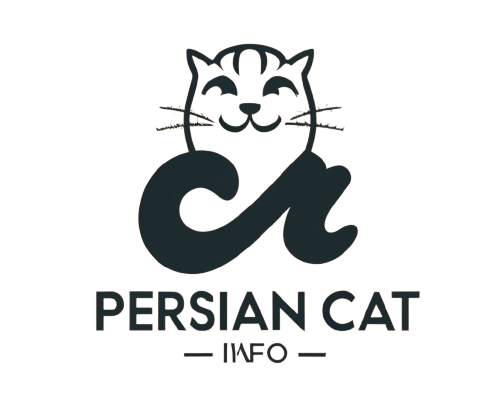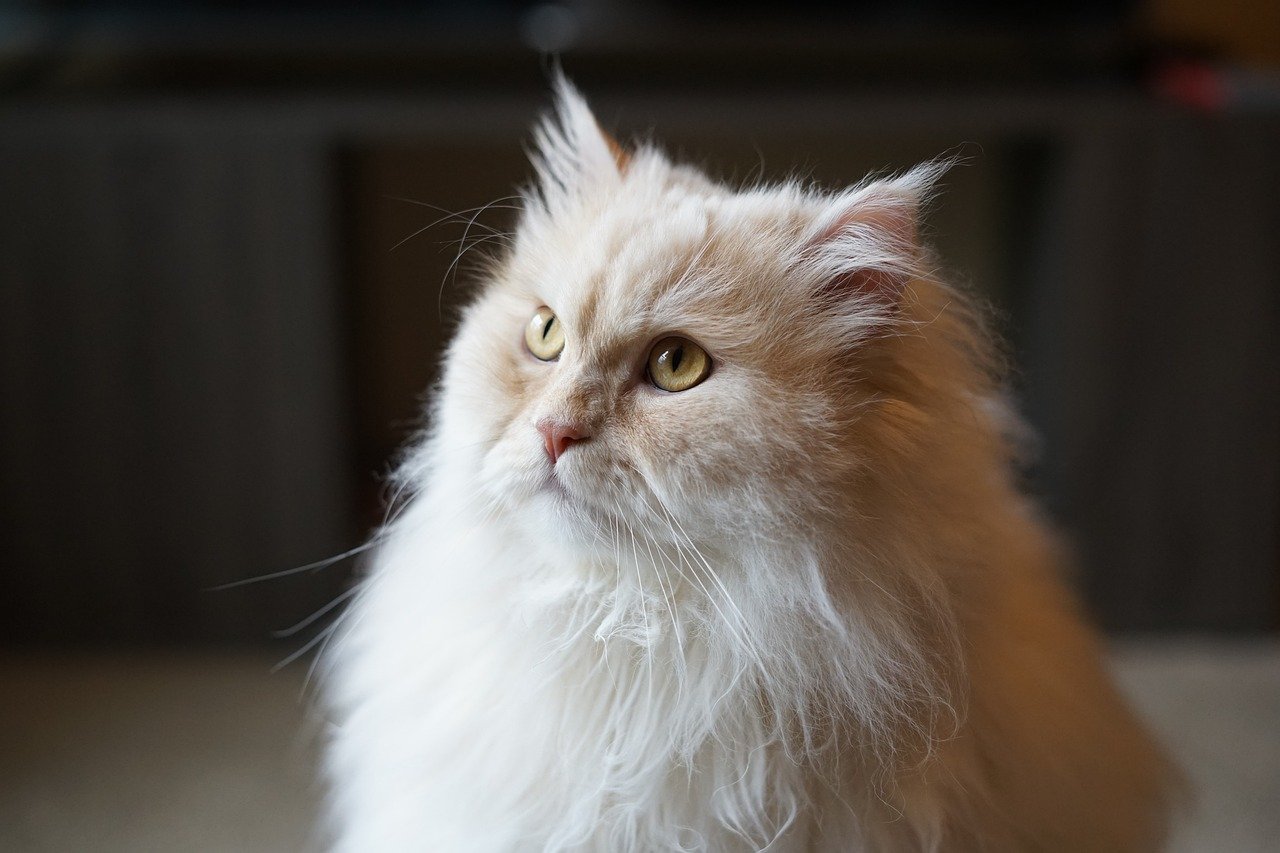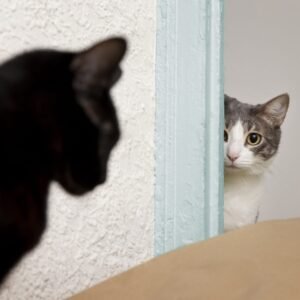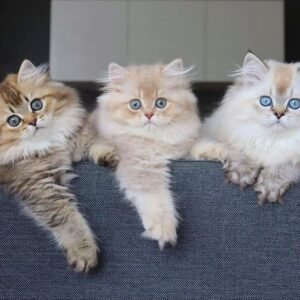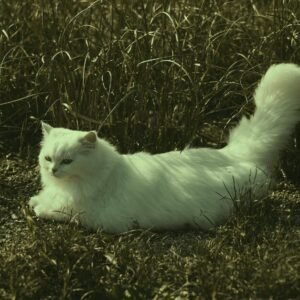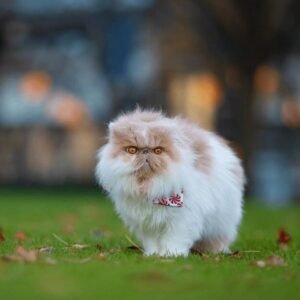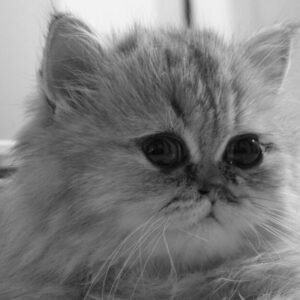Identifying a Persian cat is sometimes difficult due to the reason that there are so many variations of that breed.
Most of the time, Persians are adopted from breeders, so the owners know exactly what they’re getting. However, sometimes Persians show up at animal shelters or are found as strays.
In these circumstances, it can be difficult to determine if a feline is a Persian or not.
To know what a Persian cat looks like or how can we identify them? This post is all about you, we will explore different things about the appearance of the Persian cat.
The 10 Methods to Tell If Your Cat is Persian
1. Identifying Persian cats by their face
Persian cats have a unique facial structure. Their faces are often very round and have fluffy and soft cheeks.
Persian cats are notably recognized for their distinctive flat faces, a feature known as brachycephaly, resulting in a shortened nose and a round facial structure.
Their large, expressive eyes, set widely apart, are typically round, contributing to their charming appearance.
Typically, Persian cats either have blue or amber eyes. Meanwhile, the ears tend to be very small and round-tipped in appearance
2. Identifying Persian Cats by their coat
Persian cats have a very long and silky fur. Many other felines also have so much long and silky fur, but you can’t use this trait to identify this breed.
However, if they also have other features, this may be an additional clue.
Their fur needs to be combed every day to avoid getting knots and tangles. Their hairs also need to be trimmed time after time.
Regular grooming is essential to maintain the health and beauty of their coats, as the long and dense fur requires attention to prevent matting.
3. Identifying Persian cats by their coat color
Whenever we think about Persian cats, our mind picture the white color cat but officially this is not true at all. Persian cats can only come in a wide variety of colors.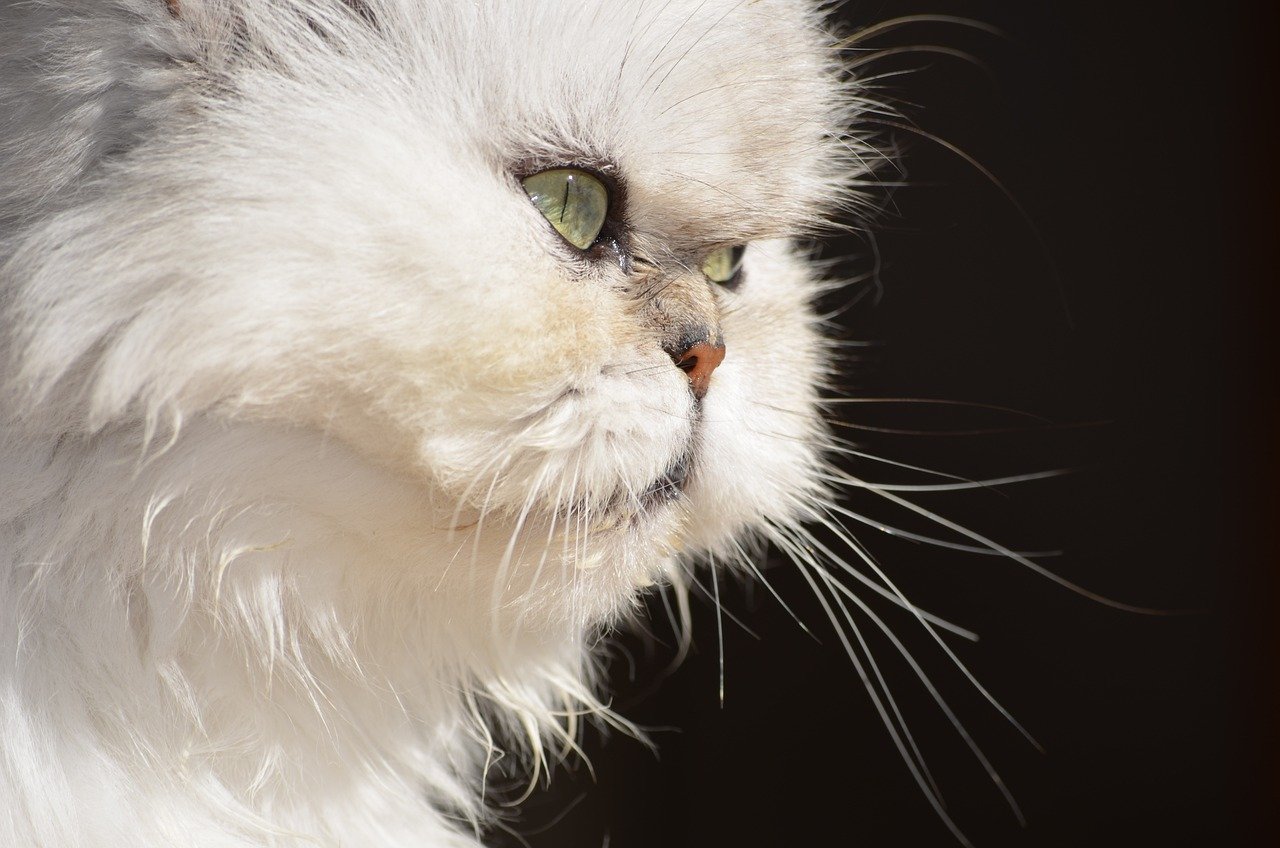
Some of the most common colors include white, red, cream, black, brown, blue-gray, chocolate, lilac, silver, golden, tortoiseshell, blue-cream, calico, and seal (usually a mix of cream and brown/black.
Patterns can also give you some clues. But these cats come in so many different patterns, they practically cover the whole range of common cat patterns.
For this reason, the pattern often isn’t very helpful in determining the breed of your feline
4. Identifying Persian cats by their coat pattern
There are numerous variations of the coat pattern seen in Persian cats. Persians for cat competitions have divided the most common Persian patterns into seven categories (called divisions) to more easily identify what type of Persian you’re adopting or purchasing.
- Solid division: The Solid Color Division encompasses Persians that exhibit a single, uniform color across their entire coat. Most solids have copper-colored eyes, but white Persians may have copper, blue, or one of each.
- Golden and Silver division: – Persians in this category have either chinchilla (sparkling white with fine black tips) coats or shaded silver and golden coats. The Silver and Golden Division in cat coat patterns represents a captivating subset within the intricate world of feline aesthetics, adding a touch of opulence and brilliance to the spectrum of Persian cat variations. Goldens have a warm, while silvers have black down.
- Shaded and smoked division: Shaded Persians exhibit a subtle color shift along the hair shaft, while Smoke Persians have a solid color at the base with a lighter, contrasting color near the tips.
- Colorpoint division: The Colorpoint Division draws attention to Persians with darker points on their ears, faces, paws, and tails. This category includes Persians that have tortoiseshell, chocolate tortoiseshell, blue-cream, and lilac-cream coats.
- Tabby Division: The Tabby Division celebrates the intricate patterns found in Persian cats, featuring stripes, swirls, or spots on their coat. Classic tabbies have a bull’s eye pattern along the side, and mackerel tabbies have thin lines that appear drawn around the entire body.
- Calico division: this category includes calico patterns and dual-colored coats. All cats in this division have copper eyes, except for silver tabbies, which may have green or hazel eyes
- Himalayan division: these Persians tend to have white or cream bodies with point colors restricted to the face and extremities. The cats in this category always have blue eyes.
5. Identifying Persian cats by their tail
Persian cats can also be identified by their tail. They have usually small tails. Their tails are usually fairly fluffy and loft upwards. Their tails are just lofted upward.
Many Persians carry their tail at an angle below their back, so their fluff may not be apparent in the beginning. The tail is usually straight with little to no curvature.
6. Identifying Persian cats by their weight and body shape
Persian cats’ weight and their body shape also help to identify them. Male cats have strenuous bodies and are more energetic than females.
Males should be up to eight pounds or 3.6kg. Female Persian cats are weaker than males and are less energetic and their weight is around seven pounds or 3.1kg.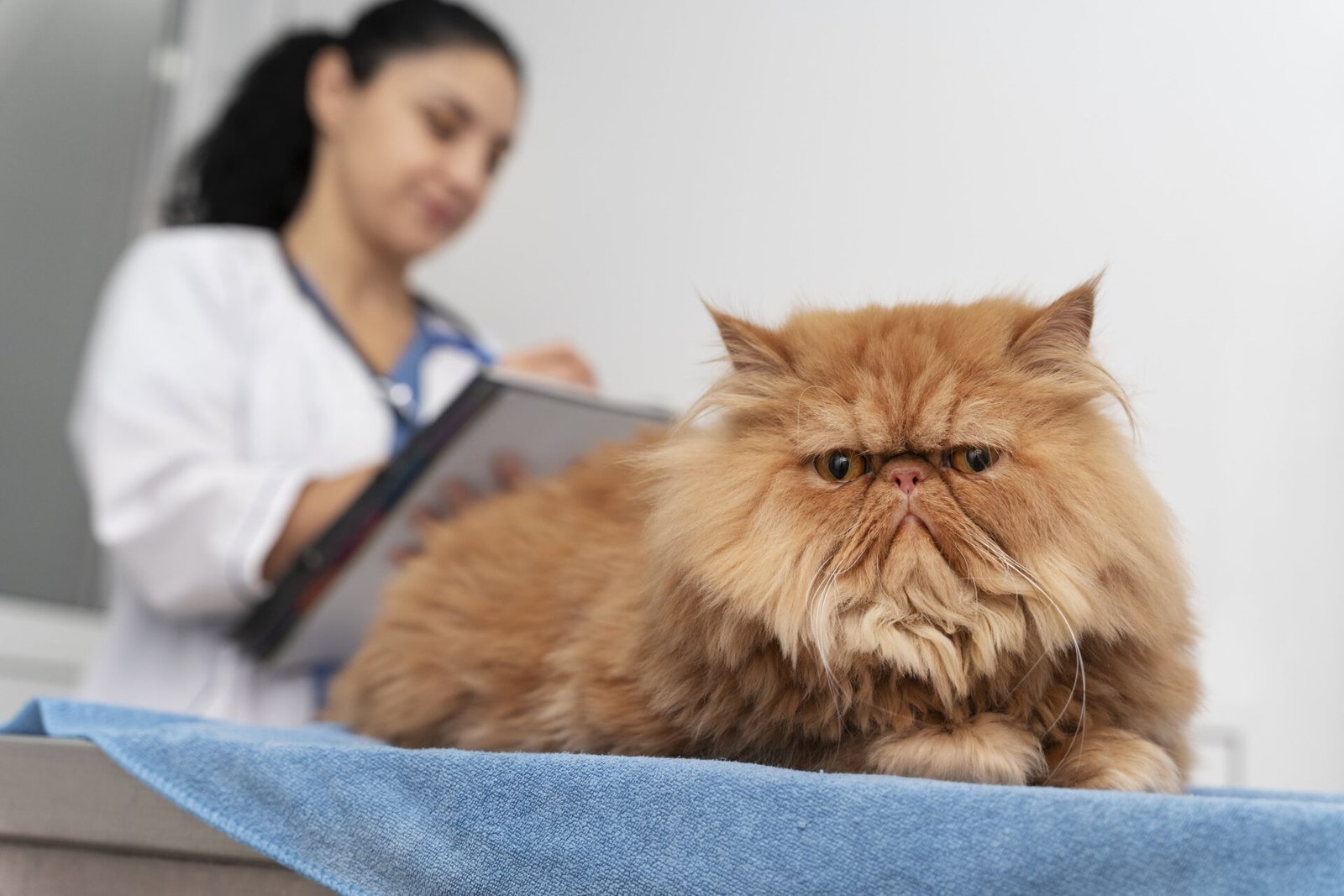
If a cat is in a health condition and falls outside of this range, they probably aren’t a full-blooded Persian. These cats have been bred to be a specific size.
Persian cats have a distinctive round face with short noses, giving them a flat facial profile. Their bodies are stocky and low to the ground.
A Persian cat’s legs have heavy bones that carry the medium- to large-sized body. The shoulders are usually broad, with an overall thick, compact body.
The neck is also short and thick.
7. Identifying Persian cats by a DNA test at home
Search for a test kit on a reliable website, such as one connected to a university.
To find out what breed your cat is, you will need to swab its cheek a few times and submit the samples to a lab where specialists will do DNA tests. With an accuracy rate of 90%, the test can help you determine if your cat is truly Persian or not.
You don’t want to use this as the only source of confirmation. If your cat looks nothing like a Persian and a DNA test shows that they’re a Persian, the test is likely wrong.
However, if you combine this test with multiple other features, you’ll likely be able to make a good guess.
8. Identifying Persian cats by common health complications in them
Like other breeds, Persian cats can also be prone to several health problems. Some cannot affect the cat’s quality of life but some diseases affect the cat’s life so seriously that they cause even death. Some of the most common health complications seen in Persian cats include:
- Peritoneopericardial hernia
- Cataracts
- Facial fold dermatitis
- Systemic lupus
- Kidney Disease
- Entropion
- Lysosomal storage disease
- Progressive retinal atrophy
- Hypertrophic Cardiomyopathy (HCM)
- Polycystic Kidney Disease (PKD)
- Strabismus/nystagmus
- Dermatophytosis
- Basal cell tumors
9. Identifying Persian cats by their behavior
- Persian cats tend to prefer sitting in a person’s lap or lying in the sun over more physical activities.
- They tend to not be very demanding of people’s affection. Sitting or reclining in a person’s lap is usually sufficient for most Persians.
- Persians often get frightened or annoyed by loud noise and/or poorly behaved children.
- Persians are less vocal. Persian cats are not known for being very vocal. They might greet people with a quiet, low-key meow, but will not meow or yowl with any persistence unless they are distressed.
10. Identifying Persian cats by asking a breeder
If you have a Persian breeder near you, they may be able to give you their opinion on whether or not your cat is a Persian
The best way to recognize your cat is by taking your cat to the breeder. They will often be able to look at the cat in person and tell if they are a Persian or not.
However, they may also be able to give some opinions through a series of photos.
Basically, vets don’t know about the breed of cats but they know about the grooming and care breeders spend most of the time with cats they can easily know what kind of breed of Persian is this.
Conclusion
In simple we can identify a Persian cat as having luxurious long coats and small, flat features with large expressive eyes. Recognize them by their quiet and calm behavior, their interaction with their owners, and DNA tests from reputable labs.
Leave any questions about the identification of the Persian Cat.
